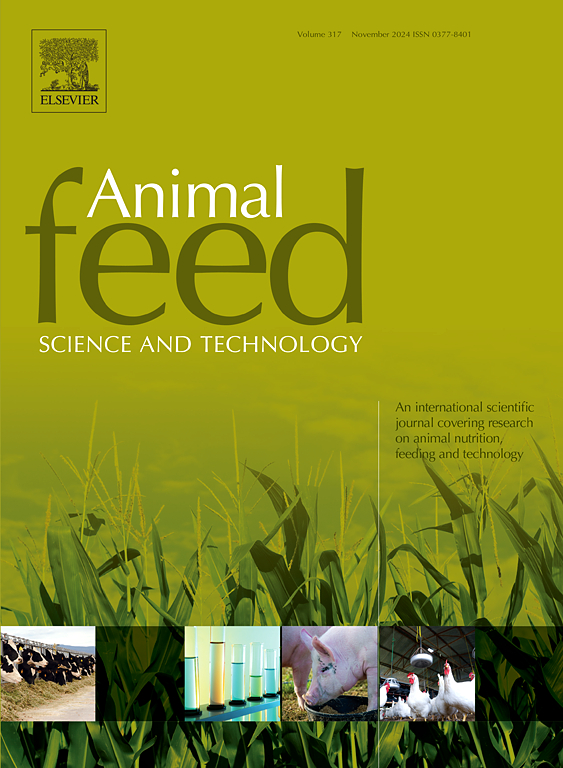从南大西洋鱼类废物中回收的消化酶的包封评价及其潜在的生物技术应用
IF 2.5
2区 农林科学
Q1 AGRICULTURE, DAIRY & ANIMAL SCIENCE
引用次数: 0
摘要
鱼类内脏是一种丰富且具有成本效益的消化酶,特别是蛋白酶的来源,可以很容易地提取并作为生物活性成分用于各种工业过程中,以获得增值产品。然而,蛋白酶对环境因素很敏感。维持其酶活性的一种成功方法是包封。本研究的目的是评价西南大西洋商业鱼类Merluccius hubbsi和Percophis brasiliensis废弃物的碱性和酸性蛋白酶的包封效率,并确定其酶活性在不同储存条件(室温和4ºC)下的稳定性。此外,利用体外消化模拟实验评估了胶囊化蛋白酶的有效性。结果表明,固定在新鲜微胶囊中并在4℃条件下保存60 d后,巴西螺蛋白酶保持稳定。在冷冻干燥微胶囊和新鲜微胶囊中保存的碱性蛋白酶在两种储存温度下均能保持60天的活性。两种植物的天冬氨酸蛋白酶被包裹在冷冻干燥的胶囊中并在4°C下保存,保持了催化活性。体外酶解实验证实,酪蛋白在60 min后被包被酶和游离酶水解。在体外实验180 min后,酪蛋白释放的游离氨基酸量趋于稳定。这些结果证明,海藻酸盐和壳聚糖的组合包封是一种很有前途的工具,用于这些鱼类酶的不同生物技术应用,如精制商业洗涤剂添加剂和水产饲料。本文章由计算机程序翻译,如有差异,请以英文原文为准。
Assessment of encapsulation of digestive enzymes recovered from South Atlantic fish wastes for potential biotechnological applications
Fish viscera represent an abundant and cost-effective source of digestive enzymes, particularly proteinases, which can be readily extracted and employed as bioactive components in various industrial processes to obtain value-added products. However, proteinases are sensitive to environmental factors. A successful method for maintaining their enzymatic activity is encapsulation. The aim of this study was to evaluate the encapsulation efficiency of alkaline and acid proteinases derived from wastes of the commercial fish species Merluccius hubbsi and Percophis brasiliensis from the Southwest Atlantic Ocean, and to determine the stability of their enzymatic activity under different storage conditions (room temperature and 4ºC). In addition, the effectiveness of the encapsulated proteinases using an in vitro digestion simulation assay was assessed. The results indicated that P. brasiliensis proteinases immobilized in fresh microcapsules and stored at 4°C remained stable for 60 days. Alkaline proteinases stored in freeze-dried microcapsules from both species, and fresh microcapsules from P. brasiliensis, retained their activity at both storage temperatures for 60 days. Aspartic proteinases from both species, encapsulated in freeze-dried capsules and stored at 4°C, maintained catalytic activity. In vitro enzymatic hydrolysis assays confirmed that casein is hydrolyzed after 60 min by both the encapsulated and free enzymes. In turn, the amount of free amino acids released from casein leveled off after 180 min of in vitro assay. These results evidenced that encapsulation using a combination of alginate and chitosan is a promising tool for different biotechnological applications of these fish enzymes such as elaboration of commercial detergent additives and aquafeeds.
求助全文
通过发布文献求助,成功后即可免费获取论文全文。
去求助
来源期刊

Animal Feed Science and Technology
农林科学-奶制品与动物科学
CiteScore
6.00
自引率
6.20%
发文量
266
审稿时长
3 months
期刊介绍:
Animal Feed Science and Technology is a unique journal publishing scientific papers of international interest focusing on animal feeds and their feeding.
Papers describing research on feed for ruminants and non-ruminants, including poultry, horses, companion animals and aquatic animals, are welcome.
The journal covers the following areas:
Nutritive value of feeds (e.g., assessment, improvement)
Methods of conserving and processing feeds that affect their nutritional value
Agronomic and climatic factors influencing the nutritive value of feeds
Utilization of feeds and the improvement of such
Metabolic, production, reproduction and health responses, as well as potential environmental impacts, of diet inputs and feed technologies (e.g., feeds, feed additives, feed components, mycotoxins)
Mathematical models relating directly to animal-feed interactions
Analytical and experimental methods for feed evaluation
Environmental impacts of feed technologies in animal production.
 求助内容:
求助内容: 应助结果提醒方式:
应助结果提醒方式:


